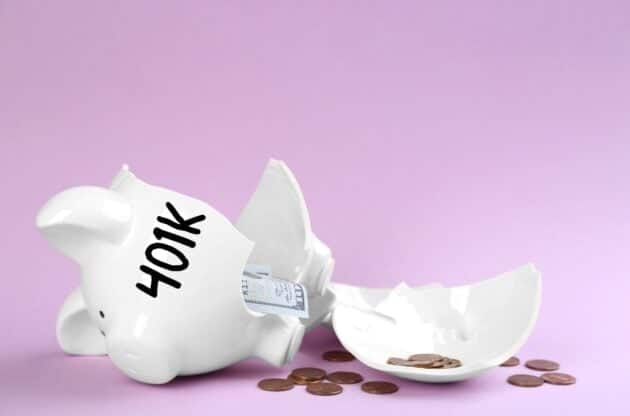After socking away 401(k) funds for years…
Many Americans hope they’ve saved enough to spend their golden years relaxing, traveling and enjoying time with family and friends.
But with multiple economic challenges sweeping the nation — starting in 2020 with the pandemic and now going into 2023 — a growing number of those savers may now face the unsettling possibility of a retirement savings shortfall.
For some, that shortfall is already visible.
According to recent data from a Fidelity investment analysis of 24,500 retirement accounts, 401(k) balances dropped 22.9% in 2022 as the S&P 500 shed 20% of its value.1 So, if you’ve seen your 401(k) tumble, you’re not alone. And it may be time to consider alternate strategies to help secure your financial future.
Because, as Nouriel Roubini, the prominent US economist who predicted the 2008 crash, warns…
“Traditional investments will not work in a “perfect storm” of “inflation, recession, stagflation and debt.”
With Roubini’s perspective in mind, it’s sad to think about unprepared folks who may have been near retirement during the “perfect storms” of 2008 and 2020.
How many were caught unaware by the crashes and saw their traditional investments fall off a cliff?
How many of them had no alternative investments to help cover the shortfall?
How many had sudden, unexpected long-term medical care bills?
How many of them had to return to work out of retirement?
The uncomfortable truth is many are still reeling from those downturns. And many are now reaching retirement years without a financial hedge to help secure their savings against further possible shortfalls.
But how did we get here? Why are so many Americans facing a possible retirement savings shortfall?
A brief history of how the 401(k) got its start may offer a clue:
Before the Great Depression, most Americans didn’t retire or save money for their golden years.
Instead, most people worked until they were physically unable. After that point, they had to depend on luck, family or charity to make ends meet.
This all changed in 1935, when Franklin Roosevelt introduced the Social Security insurance program to protect aging, out-of-work Americans “against the hazards and vicissitudes of life.”
In theory, Social Security benefits would offer supplemental financial support. And generous, defined-benefit pension plans would hopefully cover the rest. But as America’s quality of living increased, life expectancies rose. Company pension plans faded away. And 401(k)s took their place in 1978.
For years after the 401(k)’s start, the federal government flooded the US economy with printed dollars. Markets skyrocketed. Interest rates plummeted. Corporate profits flowed. Funds ballooned. And a comfortable retirement, supported by 401(k)s and Social Security payments, seemed all but certain for millions of Americans.
But now, as those “easy money”2 decades and loose fiscal policies come to an end…
As the “everything bubble”3 deflates..
And the US possibly descends into deeper financial turmoil…
401(k)s may no longer meet the needs of some retirees.
But what about Social Security benefits?
Well, according to the Social Security Administration’s own published research…
Unless our divided Congress makes required changes, Social Security payments will shrink for 50 million Americans by 2034, and the trust fund behind Social Security payments will “be exhausted” by 2037.
That’s only 11 years away.
Meanwhile, due to soaring inflation and runaway money printing, the buying power of every dollar you saved 20 years ago is now about 60 cents… and some believe it will keep dropping.
“Hazards and vicissitudes of life” indeed.
With all this happening, it’s easy to slip into doom-and-gloom thinking.
But it’s important not to make hasty, short-term financial decisions when faced with a challenging scenario like this. Instead, it may be wiser to focus on what you can control and think from a long-term perspective.
One potential long-term solution is rolling a portion of your 401(k) into a Gold IRA:
Unlike a 401(k), a Gold IRA isn’t tied to traditional assets. So, historically we did not see gold lose value when a group of stocks or companies fail.
A Gold IRA is also a self-directed account. This means you don’t have to give up control over your investment decisions to Wall Street. Instead, you can choose how much and which precious metals you’d like to own.
And due to its documented history of holding its value and even soaring to new record-high prices during economic downturns, diversification into physical gold may be a perfect choice to help secure your financial future.
————————–
If you’ve seen your 401(k) take a hit and you’d like to know more about rolling a portion of your retirement funds into a Gold IRA… click here to get a FREE Gold Information Kit personalized to match your needs and goals. Or, if you’d like faster service, you can chat with a Gold Alliance Specialist and get friendly, clear and useful answers to your questions right away by dialing toll-free 888-411-5680. There’s no obligation.
Sources:
1 CNBC, https://www.cnbc.com/2023/02/23/401k-retirement-savings-account-balances-sank-in-2022-fidelity-says.html
2 Investopedia, https://www.investopedia.com/terms/e/easy-money.asp
3 Fortune, https://fortune.com/2023/01/07/forecasts-gone-wrong-wall-street-bitcoin-stock-market-everything-bubble/
October 14, 2022
The Surprising Reasons for Gold’s Sluggish Response to Inflation
October 7, 2022
Retail Giants’ Defensive Pre-Holiday Cuts May Signal Massive Global Recession
The post Sharp 401(k) Drop Triggers Retirement Shortfall Fears first appeared on Gold Alliance.
The post Sharp 401(k) Drop Triggers Retirement Shortfall Fears appeared first on Gold Alliance.

